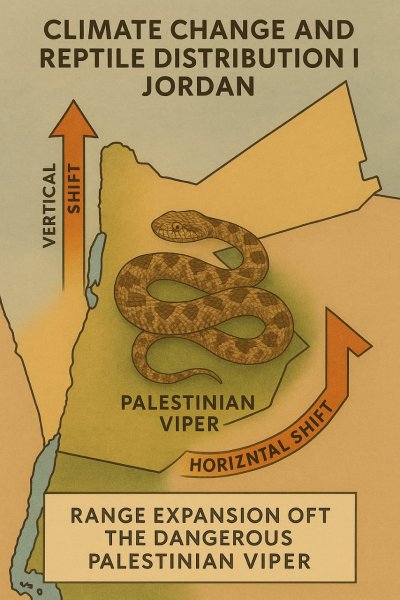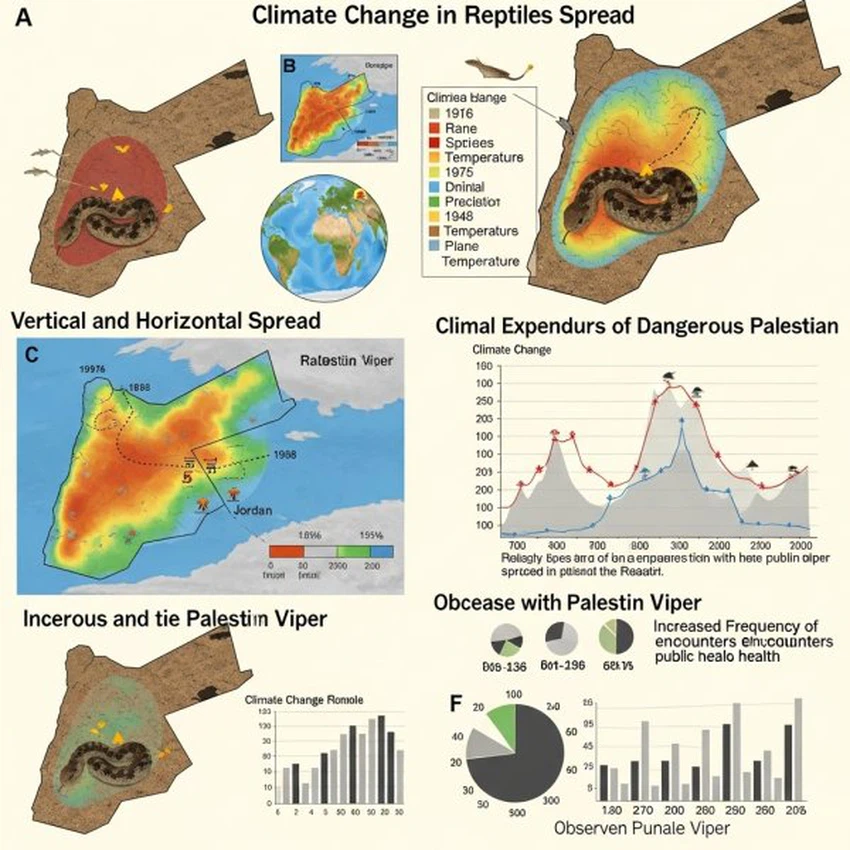First Arab study: The impact of climate change on the distribution of reptiles and snakes in Jordan and the Levant
Arab Weather - Professor Dr. Muhammad Al-Farajat did well in his latest article to call for the establishment of the "Jordanian Serum Center" to address the shortage of serums for bites from reptiles, snakes, and vipers.
And motivate me to write this study.
The difference between a snake, a viper, and a serpent
First, we must differentiate between the following terms: snake, viper, and serpent.
Snake: It is huge in size. When it is young, it is called “Hayya”, whether it is male or female. When it grows and becomes larger, the female snake is called “Afaa”.
With the spread of the phenomenon of talking about snakes and vipers, especially poisonous snakes, in Jordan and the Levant, especially in the recent period, we must address the following topics:
First: Reptiles and snakes have existed since God created the earth and those on it, but without a doubt the various media and social media and their spread have contributed to shedding light on this phenomenon which has become a concern for public opinion in Jordanian society and the Levant based on popular mythology - stories of snakes and serpents - which is a basic axis in the popular tales of the East, especially in the countryside.

The question is: Have reptiles and snakes spread more in these times than in all previous times!!!!??. And did those reptiles and snakes maintain their original habitat and move beyond it to new places and regions!!!?? Or did they move for other reasons!!!
Climate change has played a major role in the horizontal and vertical movement of reptiles and snakes in Jordan and the region through several factors that we summarize below:
- Habitat loss and threat, which is the original and natural place where reptiles and snakes live and reproduce, is often found in forests, valleys, reefs, caves, caverns, agricultural lands, and rugged areas. These areas have witnessed several natural and human factors that directly threaten them, including urban sprawl, modern agricultural projects, rural guest houses, hiking trips along paths and trails, camping, and the direct threat to the original habitat that accompanies these activities and events.
- The loss of many of the primary food sources for reptiles and snakes, such as insects, rodents, and small reptiles, due to rising temperatures and declining and fluctuating rainfall rates.
- The transfer of sand, stones, vegetables and fruits from one region to another also contributed to carrying many young reptiles and snakes or their eggs to new areas where they had not been present in the first place. An example of this is the “Palestine Viper” which used to be found only in the northern regions of Jordan, the governorates of Irbid, Jerash and Ajloun, but it has now been seen in all regions of the Kingdom from its north to its south and east, and here a new life cycle began for it in the new habitat.

For these reasons, these reptiles and snakes were forced to migrate from their original habitat to new locations in search of new food sources and a safe place to live and reproduce. They were able to quickly adapt to their new environment, relying on their unique physiological characteristics. Therefore, they invaded villages, cities, and residential areas in search of food sources, challenging the biosphere system.
In short: Social media has played a role in introducing the types of these reptiles and snakes, especially the poisonous ones, and how to deal with them and the dangers of their bites. Climate change has also contributed to the serpentine movement of these reptiles and snakes to new areas and places where they were not present until the 1990s.
Arabia Weather App
Download the app to receive weather notifications and more..



